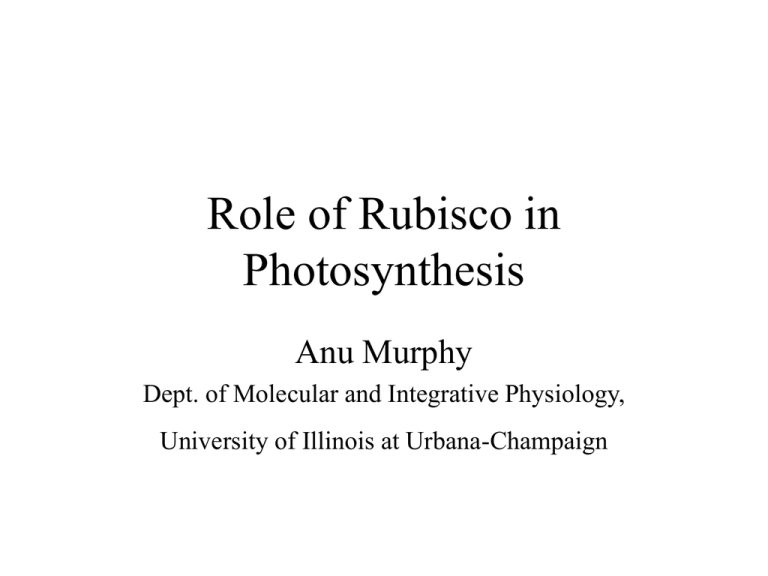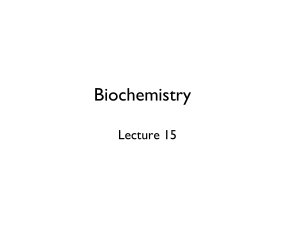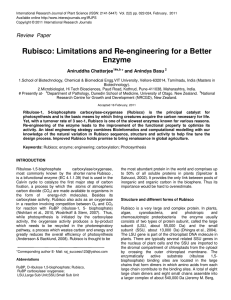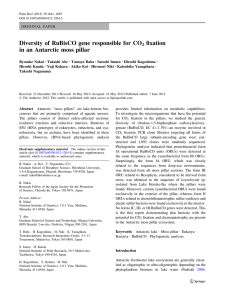Role of Rubisco in Photosynthesis
advertisement

Role of Rubisco in Photosynthesis Anu Murphy Dept. of Molecular and Integrative Physiology, University of Illinois at Urbana-Champaign Introduction • We will use the Biology Workbench (BW) to study rubisco, a protein used in photosynthesis. • Outline of presentation: – What is rubisco? – Using BW to obtain rubisco sequences from different plants/trees – Manipulate obtained sequences using BW tools Photosynthesis • Process by which green plants use CO2 and H2O to form glucose in the presence of sunlight: • 6 CO2+ 6 H2O + light energy C6H12O6 + 6 O2 • Process involves light reactions and dark reactions, enzymes, chlorophyll What is rubisco? • Rubisco, ribulose bisphosphate carboxylase, is a protein molecule present in plant cells. It takes part in photosynthesis and converts inorganic CO2 into organic forms containing C-C bonds and H atoms. These are used to sustain plants in the form of sucrose (table sugar) or stored as starch. Using the Biology Workbench • BW is available at: http://peptide.ncsa.uiuc.edu/ – click on “Student Interface to the Biology Workbench” – Click on “Register” to obtain accounts; type in full name, e-mail address (ex., murphya@oakland.edu), user ID, and password Using BW Contd. ... • In the BW menu, click on “Create a NEW Session”, name it “Rubisco Analysis” • Click on “Protein Tools” at the top of the page • In the search box near top of page, type “rubisco wheat”, click on “GenBank Plant Sequences” in the “Select one or more Databases” box, then click on “Ndjinn” button on the right • Select 1 or 2 sequences with highest scores that mention “ribulose bisphosphate carboxylase” Using BW Contd. … • Click on the “Import Sequences” button: selected protein sequences will appear on bottom of Rubisco Analysis session page • Repeat process with a few other plants (I.e., type in “rubisco lily”, “rubisco oat”, etc. for other plants of interest, then import top few sequences into your Rubisco Analysis session • To view sequences, select them and click on “View” near bottom of Rubisco Analysis page • Click on “View Records” for more information on how and from where the sequence was obtained Using BW Contd.. • After obtaining and viewing rubisco sequences, return to Rubisco Analysis page and select relevant ones (I.e., try to omit sequence fragments) • Click on “CLUSTALW” next to the “Align multiple protein sequences with each other” box • The alignment can be viewed in the CLUSTALW page: note how certain segments of the rubisco sequence are very similar between the different species of plants. These parts of the sequence might have common evolutionary origin and play functionally similar roles in photosynthesis Using BW Contd.. • Click on “Import Alignment”: this will take you to the Alignment Tools page • Select the alignment (at bottom of page) and try out the different alignment tools listed: you can color code the sequence alignment, draw phylogenetic trees to examine evolutionary relationships between your plants, etc.











